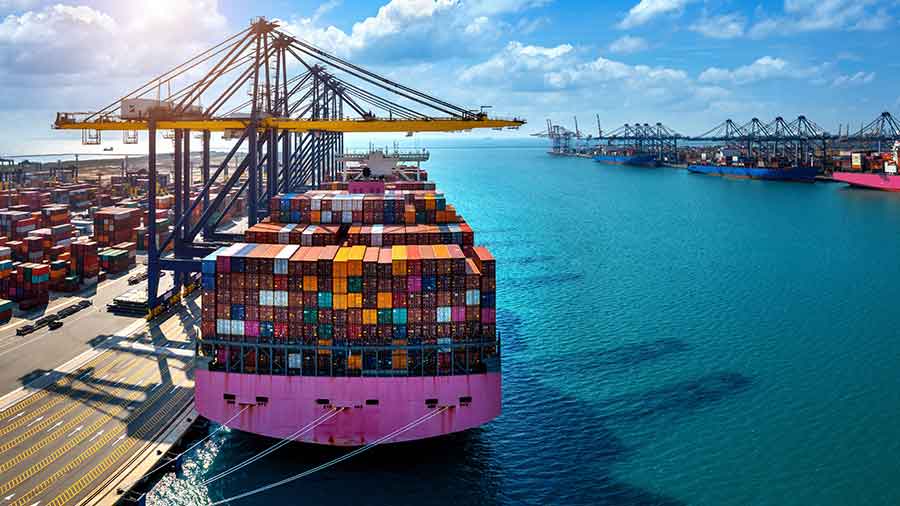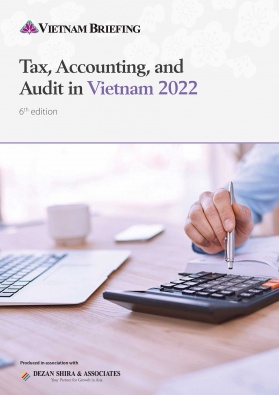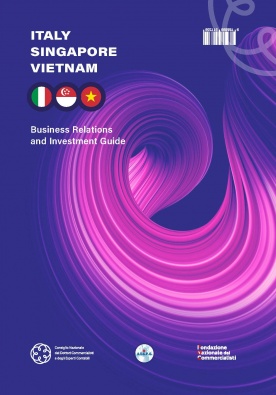Unpacked: Vietnam’s US$15.5 Billion JETP Agreement
Just Energy Transition Partnerships (JETP) are becoming an increasingly important part of the global energy transition. A handful of developing nations have already signed-up to JETPs, of which Vietnam is the most recent. Here’s a breakdown of what’s been agreed to so far.
An increase in carbon output is often part and parcel with economic development and Vietnam is not an exception. In 2009, Vietnam produced 1.5 metric tons of carbon per capita. Ten years later, that number had more than doubled to 3.5 metric tons, according to World Bank data.
While Vietnam’s carbon emissions are on a distinctly upward trajectory, curtailing economic development is well and truly off the table. The result is that a transition to green energy production will be key to bringing down the volume of greenhouse gases the country produces.
To that end, Vietnam has already committed to becoming carbon-neutral by 2050. It has also put in place a number of key policies designed to get it there. The challenge now is funding this transition and the JETP agreement, reached last week, is a crucial first step.
What is Vietnam’s JETP agreement about?
A Just Energy Transition Partnership is an agreement between developed and developing countries in which the former provides funding for the latter to transition to green energy.
This funding is in the form of grants, low interest loans, and investment provided by both the public and private sector.
JETPs are a new funding model created to help South Africa, Indonesia, India, Vietnam, and Senegal transition away from fossil fuel energy and toward clean energy in a way that also addresses social issues associated with their energy transitions.
Vietnam has for some time now been pursuing international financial support for its transition to a low-carbon economy and there have been offers made before. A US$5 billion deal, for example, was on the table shortly before COP27, however, Vietnam knocked-back the offer in search of something bigger.
Who is party to the agreement?
Vietnam’s JETP agreement has been made between the Socialist Republic of Vietnam and the International Partners Group (IPG). The IPG is made up of: the EU, the UK, the USA, Japan, Germany, France, Italy, Canada, Denmark, and Norway.
Who will pay for Vietnam’s energy transition?
The US$15.5 billion committed as part of the JETP agreement will be made up of public sector finance and private sector finance. It is to be mobilized over the next three to five years.
Public sector finance will account for half of the amount on offer at US$7.75 billion. This will be provided by the countries party to the agreement and should be provided on ‘more attractive terms’ than Vietnam might get on international capital markets.
The other US$7.75 billion will be provided by the private sector, led by the Glasgow Financial Alliance for Net Zero (GFANZ). Note that this is subject to the public sector finance outlined above being secured.
GFANZ and Vietnam’s green energy transition
The GFANZ is a group of private institutions set up at COP26 in Glasgow to provide private sector funding for the global green energy transition.
With regard to Vietnam’s JETP agreement, a working group of GFANZ members was put together including the Bank of America, Citi, Deutsche Bank, HSBC, Macquarie, Mizuho Financial Group, MUFG, Prudential Plc, Shinhan Financial Group, SMBC Group, and Standard Chartered.
Their role in developing the agreement was to identify barriers to private investment and to advocate for reform in addressing those barriers, as well as highlight approaches that might help to bring in private sector funding at scale, according to a press release from GFANZ.
It’s important to note, that the GFANZ group stressed that the private sector finance was in large part contingent on the public sector component being met. It also said that there would need to be continued policy reform at a local and international level, and “a robust pipeline of competitively tendered projects” with measurable outcomes, in order for the US$7.75 billion of investment to be realized
Key targets outlined in Vietnam’s JETP agreement
The JETP outlines three key targets:
To reduce the volume of emissions generated by the electricity sector.
Pre-agreement Vietnam was planning to hit peak metric tons of carbon dioxide equivalent (MtCO2e) emitted into the atmosphere from generating electricity in 2035.
That peak was supposed to be 240 MtCO2e, however, under the JETP agreement that target has been revised down to 170 MTCO2e by 2030.
Reduce the number of coal-fired power plants in Vietnam.
The IPG intends to help Vietnam to wean itself off coal through the JETP agreement. Specifically, they will target a reduction from a peak of 37 Gigawatts (GW) of coal-fired electricity in the system to a peak of 30.2 GW.
An April 2022 report from the Global Energy Monitor (GEM) estimated that Vietnam currently has just under 27GW of coal power in either the construction or pre-construction phase. It put the current output from coal fired power stations in Vietnam at just over 22GW.
Develop more renewable energy and more effective energy infrastructure.
Vietnam was planning for 36 percent of its energy generation to come from renewable sources by 2030. The JETP, however, is targeting increasing that figure to 47 percent.
This is possibly one of the most crucial components of this agreement. Vietnam has had broad success developing renewable energy. In particular, it has the highest installed capacity of solar power in Southeast Asia. However, lagging grid infrastructure has created problems transporting electricity from where it is generated to where it is needed.
The need for greater investment in grid infrastructure, therefore, is clear.
Other noteworthy points in Vietnam’s JETP agreement
There are also a number of other key parts of the agreement that will be worth watching.
- Protecting vulnerable groups
The agreement specifically mentions protecting vulnerable groups who may be impacted by the green energy transition. Workers in the coal sector, heavy industry, and transportation may find themselves out of work. Furthermore, rising electricity prices may lead to low-income groups picking up an unfair share of the tab. What policy is developed with respect to vulnerable people may be key to the project’s success.
- Carbon capture, utilization, and storage (CCUS)
The agreement allows for Vietnam to use CCUS to reach its climate commitments. CCUS can be expensive, particularly when compared to developing renewable energy sources. What this looks like in practice may be critical to how effective this agreement is at reducing global warming.
- Civil society consultations
The agreement will require consultation with ‘media, NGOs and other stakeholders so as to ensure a broad social consensus’.
Notably, there is a similar requirement in the EVFTA which Vietnam has had some difficulties meeting. However, at the urging of the EU, it has managed to get a civil society consultative group up and running.
Quartz also noted earlier this year that a number of critical climate activists are currently imprisoned. They went so far as to suggest that climate activists were afraid to join the discussion, and this was what had held up the agreement. It’s not clear in the information supplied thus far, how this will be addressed.
What to watch for foreign firms
Vocational education and training (VET)
VET is expected to play a big role in Vietnam’s energy transition and is specifically mentioned in the JETP agreement. Transitioning workers from low-skilled, labor-intensive work, for example, coal mining, will require extensive re-skilling and upskilling. The renewables energy sector will also demand a large volume of high skilled labor.
In vocational training and education, the path for foreign investors is already well-tread. Key international education institutions from around the world are already in operation in Vietnam and this agreement may open the sector for many more.
Regulatory reform of the electricity sector
There is still quite a lot of detail to fill in about regulatory reform in the electricity market. Vietnam has, however, already started down this path. In March, amendments to the Law on Electricity came into force that would allow foreign investors to invest in developing the transmission grid and to operate the parts they develop.
The Ministry of Investment and Trade is also trialing a direct power purchase agreement (DPPA) scheme whereby industrial consumers will be able to make agreements with electricity producers directly.
Overall, Vietnam’s electricity market is moving toward greater liberalization and this, particularly with regard to renewables, should provide a plethora of opportunities.
What’s next for Vietnam’s Just Energy Transition Partnership?
It’s worth noting that this is “not a binding international agreement and does not give rise to rights and obligations under international law.” It is, however, a financially sizable step in the right direction.
Technically speaking, the agreement requires a secretariat to be established made up of members of the IPG and the Vietnamese authorities by April of 2023. The secretariat will essentially oversee the entire operation.
The parties have also committed to developing a JETP Resource Mobilization Plan by November next year.
As such the next 12 months will be a crucial year for Vietnam’s energy transition and how the JETP develops during this period will be critical to its success.
About Us
Vietnam Briefing is published by Asia Briefing, a subsidiary of Dezan Shira & Associates. We produce material for foreign investors throughout Eurasia, including ASEAN, China, India, Indonesia, Russia & the Silk Road. For editorial matters please contact us here and for a complimentary subscription to our products, please click here.
Dezan Shira & Associates provide business intelligence, due diligence, legal, tax and advisory services throughout the Vietnam and the Asian region. We maintain offices in Hanoi and Ho Chi Minh City, as well as throughout China, South-East Asia, India, and Russia. For assistance with investments into Vietnam please contact us at vietnam@dezshira.com or visit us at www.dezshira.com
- Previous Article Customs, Trade Reform: the EVFTA Two Years in Review
- Next Article Vietnam’s HR Landscape, Compliance, and Recruitment – Latest Issue of Vietnam Briefing Magazine
































